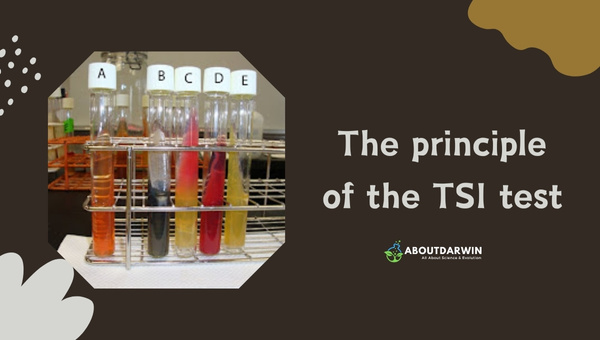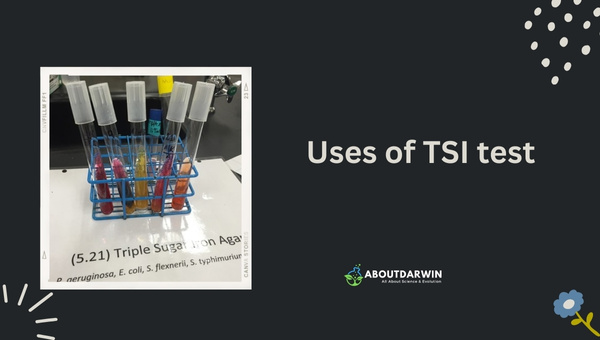Physical Address
304 North Cardinal St.
Dorchester Center, MA 02124
In the world of microbiology, there are numerous tests responsible for identifying and differentiating between various species of bacteria and microorganisms. One such critical test is “The Triple Sugar Iron or TSI Test.” Not only does it have a good reputation for being reliable, but its scope in bacterial recognition and differentiation is also quite wide-ranging.
The Triple Sugar Iron (TSI) Test strikes as a unique procedure utilizing the principle of nutrient differentiation to detect the presence or absence of certain types of bacteria. It holds paramount importance in clinical laboratories and medical research due to its specific uses and applications.
Contents
The principle of The Triple Sugar Iron (TSI) Test is eloquently simple – it’s based on the fermentation abilities of certain microbes. It utilizes a medium that contains three distinct types of sugar: lactose, sucrose, and glucose, along with iron salts and phenol red indicator. These ingredients collectively assist in revealing the bacteria’s metabolic traits.

The test proves itself vital in the microbial identification process because its ability to differentiate bacterial species is based on their carbohydrate fermentation patterns and production of hydrogen sulfide.
The presence or absence of these behaviors confirms or negates the existence of specific bacterial colonies. Thus providing data that are essential for accurate bacterial diagnosis.
Also Read: Acid-Fast Stain Revealed: Unveiling Microbial Secrets
Here’s a step-by-step guide on how The Triple Sugar Iron (TSI) Test is conducted:
It’s fascinating how this procedural execution leads us closer and clearer toward accurate diagnosis parameters in microbial laboratories!
In the realm of clinical laboratories, The Triple Sugar Iron (TSI) Test is widely used for detection and identification purposes. The test’s ability to differentiate bacterial species based on how they metabolize carbohydrates plays an essential role in identifying bacteria like Salmonella, Shigella, and Proteus.

Now let’s talk about medical research – another important area where the TSI test proves its mettle. It aids researchers in studying bacterial metabolic processes and characteristics. Such understanding contributes to developing treatments or interventions for bacterial infections related to these identified species.
Interpreting the results of a Triple Sugar Iron (TSI) Test requires keen observation and understanding. Here, I will explain what a positive or negative impact could mean:
| Test Result | Color of Medium | Gas Production | What it Reveals |
|---|---|---|---|
| Positive | Yellow | Present (Yes) | Bacteria present are able to ferment one or all three sugars, resulting in the production of acid and gas. |
| Black (butt only) | Not Required | Bacteria can reduce sulfur to hydrogen sulfide; a Black precipitate is formed. | |
| Negative | Red | Absent (No) | The bacteria cannot metabolize the sugars; the area of growth remains red due to the alkaline condition. |
It’s intriguing how the bacterial behaviors and reactions align with the interpretation markings made on table grounds. This dramatically simplifies understanding the complex scientific process underlying such biological occurrences.
Also Read: Planning a Perfect Family Reunion: A Comprehensive Guide
A yellow (acidic) color in the slant and butt indicates that the organism being tested ferments dextrose, lactose, and sucrose.
Carbon dioxide is produced in Tsi.
The slant can become a deeper red-purple (more alkaline) as a result of the production of ammonia from the oxidative deamination of amino acids.
A positive result could signify two things: the presence of gas indicates that the bacteria can ferment one or all three sugars, and black coloration at the butt means that bacteria can reduce sulfur to produce hydrogen sulfide.
Failure to stab the butt invalidates this test. The integrity of the agar must be maintained when penetrating.
Also Read: Uncovering the Best: GenealogyBank vs Newspapers.com
In conclusion, it’s evident that “The Triple Sugar Iron (TSI) Test” assists remarkably in the field of microbiology. This test aids in the identification and differentiation of bacteria based on carbohydrate fermentation patterns and sulfur reduction properties. Thus making it an indispensable tool as far as clinical laboratories and medical research are concerned.
Deciphering through color changes and gas production, signifying positive or negative outcomes, might seem daunting initially. Still, upon understanding its principle and procedure, one can appreciate how this method simplifies complex microbial identification processes.
In essence, the TSI Test continues to play a pivotal role in advancing our fight against harmful bacterial infections.